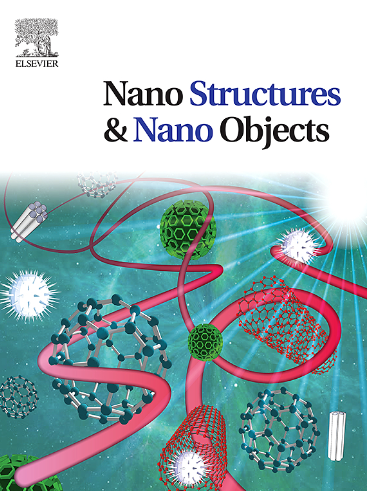Analysis and assessment of the bandgap of Al5AgX(ZnO)95-X thin films composed of nanoparticles
IF 5.45
Q1 Physics and Astronomy
引用次数: 0
Abstract
Dip-coating sol-gel method was applied to deposit thin films of Al5AgX(ZnO)95-X on soda-lime glass substrates. This research helps us understand how Ag affects the physical and optical properties of the films. We used advanced techniques like HRTEM, HRSEM, and XRD to analyze the films' structure. This approach explores potential uses for these materials in various fields. These studies suggest that as-deposited thin films are composed of rod-shaped particles, and the shape was found to change from thick to fine with the increase in Ag content. The amount of dopant has a significant impact on its properties and crystallinity. We observed an increasing number of particles transitioning into smaller sizes with the rise in Ag content. Optical absorptions (300–900 nm) at room temperature suggest a direct bandgap that increases with an increase in doping content. This is an indication of the presence of defect states and the high density of localized states. The width of the Urbach tails in the localized states shows a narrowing trend with an increase in doping content. This could potentially be attributed to a decrease in the band tails, leading to an increase in the optical band gap. Moreover, as-synthesized material indicated superb chemical stability. We observed significantly higher binding energy and transparency in our as-synthesized samples. We also observed a remarkable blue shift in the absorption spectra, which shifted towards the lower wavelength side with the addition of more Ag content.
求助全文
约1分钟内获得全文
求助全文
来源期刊

Nano-Structures & Nano-Objects
Physics and Astronomy-Condensed Matter Physics
CiteScore
9.20
自引率
0.00%
发文量
60
审稿时长
22 days
期刊介绍:
Nano-Structures & Nano-Objects is a new journal devoted to all aspects of the synthesis and the properties of this new flourishing domain. The journal is devoted to novel architectures at the nano-level with an emphasis on new synthesis and characterization methods. The journal is focused on the objects rather than on their applications. However, the research for new applications of original nano-structures & nano-objects in various fields such as nano-electronics, energy conversion, catalysis, drug delivery and nano-medicine is also welcome. The scope of Nano-Structures & Nano-Objects involves: -Metal and alloy nanoparticles with complex nanostructures such as shape control, core-shell and dumbells -Oxide nanoparticles and nanostructures, with complex oxide/metal, oxide/surface and oxide /organic interfaces -Inorganic semi-conducting nanoparticles (quantum dots) with an emphasis on new phases, structures, shapes and complexity -Nanostructures involving molecular inorganic species such as nanoparticles of coordination compounds, molecular magnets, spin transition nanoparticles etc. or organic nano-objects, in particular for molecular electronics -Nanostructured materials such as nano-MOFs and nano-zeolites -Hetero-junctions between molecules and nano-objects, between different nano-objects & nanostructures or between nano-objects & nanostructures and surfaces -Methods of characterization specific of the nano size or adapted for the nano size such as X-ray and neutron scattering, light scattering, NMR, Raman, Plasmonics, near field microscopies, various TEM and SEM techniques, magnetic studies, etc .
 求助内容:
求助内容: 应助结果提醒方式:
应助结果提醒方式:


